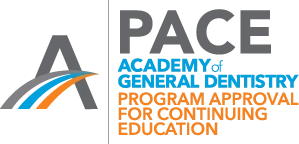Caries Process and Prevention Strategies: Erosion
COURSE NUMBER: 374
Susan Higham, BSc, PhD, CBiol, MRSB; Chris Hope, BSc (Hons), PhD, FHEA; Sabeel Valappil, BSc, MSc, PhD, PGCertEd, FHEA; Phil Smith, BDS, MDS, PhD, FDS, DRD, MRD, FDS (Rest Dent) RCS (Edin), FHEA
Credit Hours:
1 Hour(s)
SHARE
This course is part 7 of a 10-part series entitled Caries Process and Prevention Strategies. This course establishes the concept of dental erosion as a condition that is distinct from caries, and as an emerging public health issue with in...
(Use this feature to create assignments for your students and staff.)
Overview
This course is part 7 of a 10-part series entitled Caries Process and Prevention Strategies. This course establishes the concept of dental erosion as a condition that is distinct from caries, and as an emerging public health issue with increasing prevalence in people of all ages. Although often generalized under the heading of “tooth wear,” there are actually two distinct tooth surface loss processes that must be taken into account. Tooth surface loss can be the result of physical mechanisms, such as attrition and abrasion, or chemical mechanisms triggered by acid. Both of these mechanisms are discussed, as well as the chemical, biological, and behavioral factors that increase or reduce risk of tooth surface loss. For the purpose of this discussion, the impact of physical processes on tooth surface loss, such as attrition and abrasion, will be referred to as tooth wear. The process related to chemical acid attack resulting in tooth surface loss will be referred to as dental erosion.In addition, diagnosis and prevention measures related to dental erosion are introduced.
Intended Audience:
Dentists, Dental Hygienists, Dental Assistants, Dental Students, Dental Hygiene Students, Dental Assisting Students
Date Course Online:
Aug 19, 2011
Last Revision Date:
Aug 16, 2021
Course Expiration Date:
Jun 30, 2025
Cost:
Free
Method:
Self-instructional
AGD Subject Code(s):
11
Learning Objectives
Upon completion of this course, the dental professional should be able to:
- Describe why tooth wear poses a serious public health issue.
- Discuss the difference between physical and chemical wear on hard dental tissues.
- Identify the factors that cause each of the three types of physical tooth surface loss (tooth wear).
- Discuss the multiple factors that cause chemical tooth surface loss (dental erosion).
- Identify the chemical, biological and behavioral factors that influence dental erosion.
- Be familiar with how to diagnose dental erosion.
- Advise the patient on the diet, behavioral, and medical factors that can reduce dental erosion.
Disclaimers
- P&G is providing these resource materials to dental professionals. We do not own this content nor are we responsible for any material herein.
- Participants must always be aware of the hazards of using limited knowledge in integrating new techniques or procedures into their practice. Only sound evidence-based dentistry should be used in patient therapy.
Note: Registration is required to take test.
Submission Information
Academy of General Dentistry (AGD) Submission For credit transfers to appear in your AGD account in real time, make sure to add your AGD membership number in the field provided on the “Share Your Test Score” page.
CE Broker For all states that use CE Broker for licensure, “proof of completions” are electronically reported the first of every month. If a course was taken in November, the “proof of completion” will be submitted the beginning of December.
Recognition
ADEA
Newly updated in 2018 by The Procter & Gamble Company, this course was first developed in conjunction with the American Dental Education Association (ADEA) in 2008. ADEA members are encouraged to go to ADEA weTeach® for a user-friendly gateway providing dental, allied dental and other health educators with access to high-quality teaching, learning and assessment resources. Health care faculty at any stage of their career will benefit from these “how-to” resources, and also gain the opportunity to share and publish educational best practices within MedEdPORTAL®. Visit: http://www.adea.org/weteach
Approved PACE Program Provider
THE PROCTER & GAMBLE COMPANY
Nationally Approved PACE Program Provider for FAGD/MAGD credit.
Approval does not imply acceptance by any regulatory authority or AGD endorsement.
8/1/2021 to 7/31/2027
Provider ID# 211886
(Use this feature to create assignments for your students and staff.)








